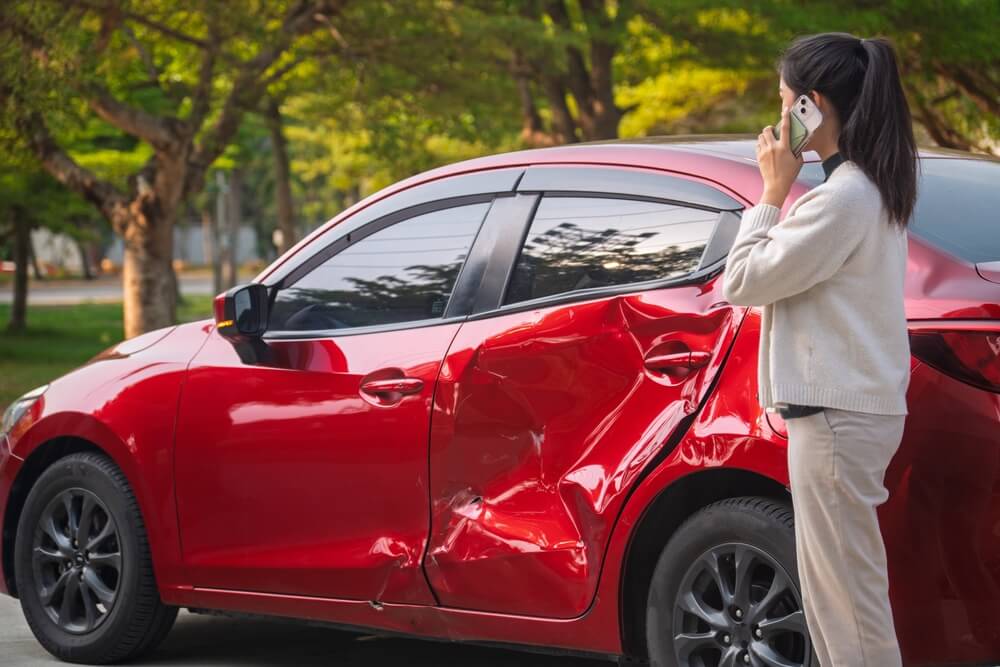
If you are not redirected within 30 seconds, please click here to continue.
Samedi: 10h – 16h HAE

If you are not redirected within 30 seconds, please click here to continue.
If you are not redirected within 30 seconds, please click here to continue.
78% of Canadian drivers witnessed road rage in the last year, only 51% admit to engaging in it: survey

- More Canadians claim to observe road rage behaviours than admit to engaging in them (78% versus 51%).
- Men are more likely than women to engage in confrontational road rage behaviours like obscene gesturing (17% versus 12%), rolling down the window to yell at someone (10% versus 6%), and stopping and existing the vehicle (4% versus 1%).
- Road rage appears to decline with age. 64% of Canadian drivers aged 18-34 say they engage in road rage versus only 38% of those aged 55+.
As day-to-day life returns to normal, many of us have places to be and people to see. While roads were quiet during the COVID-19 lockdowns, driving — and pre-pandemic driving habits — are making a comeback. Unfortunately, bustling roads bring more opportunity for conflict and collisions between drivers. And another driver coming between you and your destination can stir up feelings of frustration and anger.
A recent Leger survey conducted on behalf of RATESDOTCA revealed that more Canadian drivers claim to observe road rage behaviour than engage in it themselves while driving (78% versus 51%). Road rage creates dangerous driving conditions for everyone on the road, making it important to recognize and address aggressive driving when it arises.
According to the Ontario Provincial Police (OPP), the number of fatal motor vehicle collisions caused by speeding and aggressive driving rose by 31% in 2021, with the number of fatalities rising from 62 in 2020 to 81 last year. Letting anger get the best of you behind the wheel can lead to several driving behaviours that can cause a collision, which can put both your life and car insurance rate at risk.
More Canadian drivers claim to have observed road rage than engaged in it
According to the survey, there is a significant difference between the number of Canadian drivers who claim to have engaged in road rage in the last year (51%) and have merely witnessed it (78%). This difference is illustrated by the number of Canadians who have either been cut off by another driver or have done it themselves (14%) compared to the number who have seen other drivers cut off another vehicle (58%). Such a contrast may suggest some drivers who claim to only witness this behaviour may cut off other vehicles without even realizing it.
Perhaps the more startling behaviour — stopping and exiting the vehicle to confront another person (16% observed versus 3% engaged in) — is of greater concern. This type of road rage can not only disrupt the flow of traffic but can lead to assault and injury. Though more drivers reported having observed this behaviour than experienced it personally, it is still important to report a dangerous traffic incident when you see one.
However, road rage that results in a collision can yield even more serious consequences. More than a quarter (28%) of Canadian drivers have watched a collision unfold due to road rage in the last year versus only 8% who admitted to being involved in one as a result. Whether you believe you engage in road rage or not, its associated behaviours can increase the chances of a collision. And if you’re found to be at-fault for a collision, your car insurance rate will likely increase.

Men more likely to engage in confrontational road rage behaviours than women
Road rage comes in many forms. Of those who responded to the survey, 35% say they’ve engaged in honking, flashing lights (18%), tailgating (16%), brake-checking (16%), cutting off another driver (14%), and obscene gesturing (14%) in the last year. However, when it comes to the most common forms of observed road rage, cutting off another driver (58%) and tailgating (57%) take the lead.
Though men and women claim to engage in road rage equally (51% to 51%), men are more likely to engage in confrontational person-to-person behaviours like obscene gesturing (17% versus 12%), rolling down the window to yell at someone (10% versus 6%), and stopping and existing the vehicle (4% versus 1%). When we break down each behaviour individually, men are more likely to engage in seven out of nine of the behaviours. And since, on average, men have long been found to engage in riskier driving behaviours and are involved in more collisions than women, insurance rates for men tend to be higher. This is especially true for young men in particular.
Road rage and age: younger drivers more likely to engage than older drivers
According to the survey, the number of Canadians who engage in road rage drops significantly after the age of 55. We see a significant difference in engagement between those 35-54 (58%) and those 55+(38%), versus a smaller difference between those 18-34 (64%) and 35-54 (58%).
In fact, 15% of 18-34-year-olds have been involved in a vehicle collision due to road rage versus 7% of those 35-54 years of age and 3% of those 55+.
When we consider the cause of road rage among all age groups, half (50%) say other drivers cause them to become angry while driving, compared to cyclists (9%), construction (8%), and pedestrians (1%).
Unfortunately, only 38% of respondents say they have ways to effectively manage their anger while driving, while 20% don’t take any action at all to calm down, leaving room for error.
According to the survey, road rage plays out differently in rural versus urban areas. Those who mostly drive in rural areas are not only more likely to exit a vehicle to confront another person (9%) than urban drivers (2%); they’re also more likely to engage in every road rage behaviour listed in the graphic above.
Unfortunately, no matter where you’re driving, road rage can quickly lead to dangerous retaliation. Knowing how to deal with road rage before you encounter it can help prevent a collision and keep everyone on the road safe.
Methodology
An online survey of 1,507 Canadians (1,341 licensed drivers) was completed between June 17 and 19, 2022, using Leger’s online panel. No margin of error can be associated with a non-probability sample (i.e. a web panel in this case). For comparative purposes, though, a probability sample of 1,507 respondents would have a margin of error of ±2.5%, 19 times out of 20.
Don't waste time calling around for auto insurance
Use RATESDOTCA to shop around, and compare multiple quotes at the same time.
Get money-saving tips in your inbox.
Stay on top of personal finance tips from our money experts!









